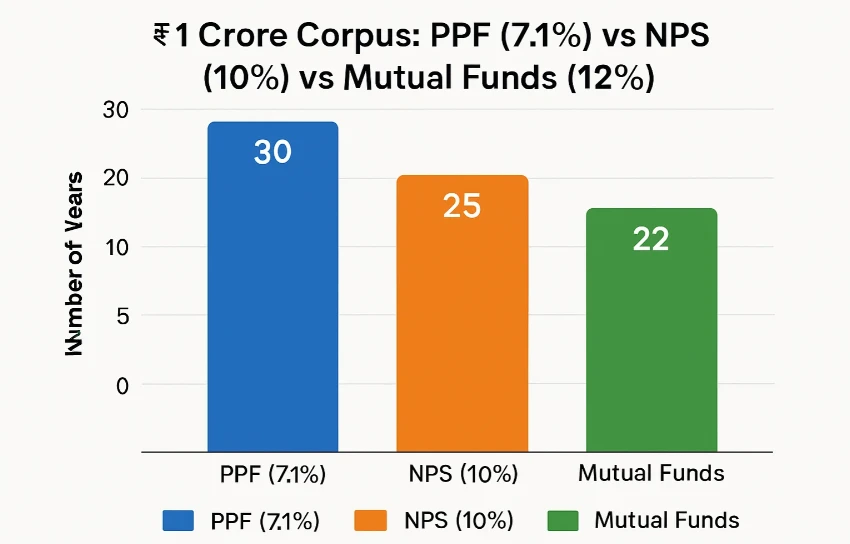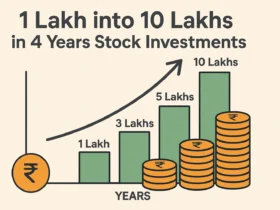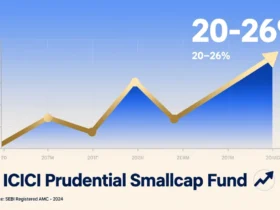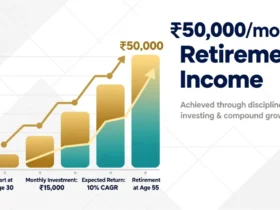Introduction: The ₹1 Crore Dream
What if you could retire with ₹1 crore — safely, smartly, and stress-free?
Every Indian investor — from the newly salaried to seasoned professionals — has one common financial milestone in mind: “How do I build a ₹1 crore corpus?” Whether you’re 25 or 45, this dream is now more achievable than ever. But the real challenge? Choosing the right path.
Should you rely on the time-tested PPF with 7.1% returns, the disciplined pension-focused NPS offering 10%, or ride the equity wave with Mutual Funds promising 12%+?
“Which investment can help me reach ₹1 crore faster, safer, and smarter?”
The ₹1 Crore Goal — How Hard Is It Really in 2025?
Inflation Makes ₹1 Crore a Necessity, Not a Luxury
With inflation averaging 6%, the ₹1 crore goal of yesterday is the bare minimum corpus many Indians need for retirement today.
According to RBI, ₹1 crore in 2045 will be worth just ₹31 lakhs in today’s money — thanks to the compounding impact of inflation.
That’s why it’s critical to not just save — but invest smartly.
Strategy Showdown – PPF vs NPS vs Mutual Funds
Let’s understand each investment product before we battle it out.
Public Provident Fund (PPF) — 7.1% Risk-Free Growth
- Interest Rate (Aug 2025): 7.1% (compounded annually)
- Tenure: 15 years (extendable in 5-year blocks)
- Risk: Government-backed = Low Risk
- Taxation: EEE – Exempt at investment, interest, and maturity
Ideal for: Risk-averse, long-term savers
National Pension System (NPS) — 10% Returns with Discipline
- Expected Returns: 9–10% (mix of equity + debt)
- Lock-in: Till retirement (60 years)
- Taxation: Partially taxable at withdrawal
- Additional Benefit: Extra ₹50,000 tax deduction under Sec 80CCD(1B)
Ideal for: Retirement-focused investors with moderate risk tolerance

Mutual Funds (Equity) — 12%+ Potential Growth
- Expected Returns: 12–15% (based on historical large/mid/small-cap funds)
- Flexibility: Anytime entry/exit
- Risk: Market-linked
- Taxation: LTCG above ₹1 lakh taxed at 10%
Ideal for: Growth seekers with long-term mindset
The ₹1 Crore Math — Who Gets There Faster?
Let’s break it down with real numbers for 2025.
Assumption: You invest ₹10,000/month starting in 2025.
Comparison Table 1: Years to ₹1 Crore – ₹10,000/month
| Investment | Return Rate | Time to ₹1 Crore | Total Invested | Wealth Gained |
|---|---|---|---|---|
| PPF | 7.1% | 25 years | ₹30 lakhs | ₹70 lakhs |
| NPS | 10% | 19 years | ₹22.8 lakhs | ₹77.2 lakhs |
| Mutual Funds | 12% | 16 years | ₹19.2 lakhs | ₹80.8 lakhs |
Mutual Funds win on speed.
Comparison Table 2: Required Monthly SIP for ₹1 Crore in 15 Years
| Investment | Return Rate | Monthly Investment Needed |
|---|---|---|
| PPF | 7.1% | ₹15,260 |
| NPS | 10% | ₹9,170 |
| Mutual Funds | 12% | ₹6,850 |
Mutual Funds are the most cost-efficient path.
Comparison Table 3: Wealth after 30 Years — ₹5,000/month
| Investment | Return Rate | Final Corpus |
|---|---|---|
| PPF | 7.1% | ₹61 lakhs |
| NPS | 10% | ₹1.13 crore |
| Mutual Funds | 12% | ₹1.50 crore |
Mutual Funds compound wealth more aggressively over long term.
Real-Life Investor Story: From ₹3,000 to ₹1 Crore in 17 Years
Meet Ankita Rao, a Mumbai-based teacher who started investing ₹3,000/month in 2007 in equity mutual funds. Despite 2008 and COVID crashes, she remained invested.
By 2024, her portfolio crossed ₹1 crore, driven by SIPs in large-cap and flexi-cap funds averaging 14–15% returns.
Her Mantra:
“Time in the market beats timing the market. I never stopped my SIP — no matter what.”
Proof that patience + consistency = compounding success.
“NPS balances equity and debt smartly. It’s ideal for disciplined retirement planning, especially for tax-conscious investors.”
— Radhika Gupta, CEO, Edelweiss AMC
Key Takeaways – Choosing the Right Path
Choose PPF if:
- You want 100% safety
- You prefer tax-free returns
- You’re okay with a long timeline (25+ years)
Choose NPS if:
- You want moderate growth + tax saving
- You’re focused on retirement
- You’re fine with partial withdrawal restrictions
Choose Mutual Funds if:
- You want to grow faster
- You can handle market volatility
- You’re aiming for early financial freedom
Emotional Angle — Don’t Let Safety Kill Your Growth

Many Indians play it too safe. They over-rely on PPF and FDs, earning just 7% when inflation is already at 6%.
That’s like running on a treadmill — sweating, but staying in the same place.
To beat inflation and build real wealth, a small dose of risk is necessary — especially when you’re young.
FAQs — Answering Your Top Queries
Is PPF better than NPS?
Not necessarily. PPF is tax-free and safe, but NPS offers higher returns with some lock-in. For long-term retirement, NPS may be better.
Can mutual funds guarantee ₹1 crore?
No. Mutual funds are market-linked. But historically, long-term SIPs in equity funds have delivered 12–15% returns consistently.
Can I invest in all three?
Yes. A smart portfolio includes:
- PPF for stability
- NPS for retirement
- Mutual Funds for growth
How to start a mutual fund SIP?
Use platforms like Groww, Zerodha Coin, Kuvera, or consult a SEBI-registered advisor.
What if I miss SIP payments?
Most platforms allow skipping. But avoid frequent breaks — consistency is key to compounding.
Conclusion: Your ₹1 Crore Strategy Starts Today
The road to ₹1 crore is not reserved for the rich. It’s built brick by brick — with smart choices, consistent investing, and a bit of courage.
Here’s Your Action Plan:
- Split your ₹10,000/month like this:
- ₹4,000 in Mutual Funds (equity SIP)
- ₹3,000 in NPS (tax-saving + growth)
- ₹3,000 in PPF (safety + tax-free corpus)
- Rebalance yearly
- Stay invested for 15–20 years
“Don’t wait to invest. Invest, then wait.”
This ₹1 crore goal is no longer a dream. It’s a destination — and you now have the map.
Ready to Start?
Explore SIPs, open an NPS account, or automate your PPF — but start today.
Share this with a friend who’s also chasing that ₹1 crore dream.






























Leave a Reply